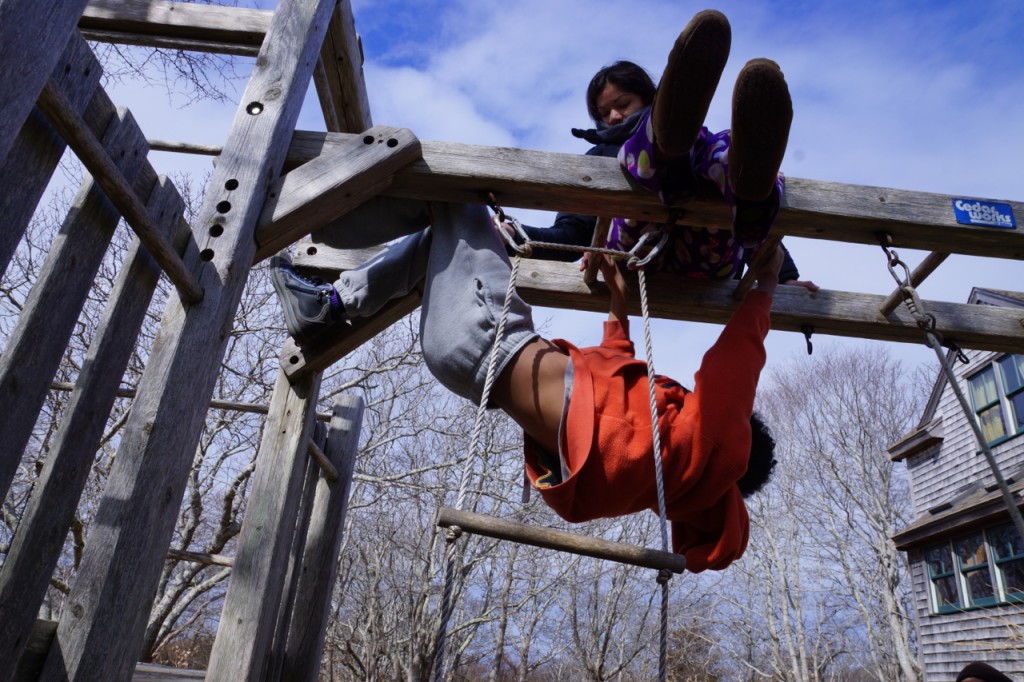Category Archives: the body
Body-Mind Centering Conference
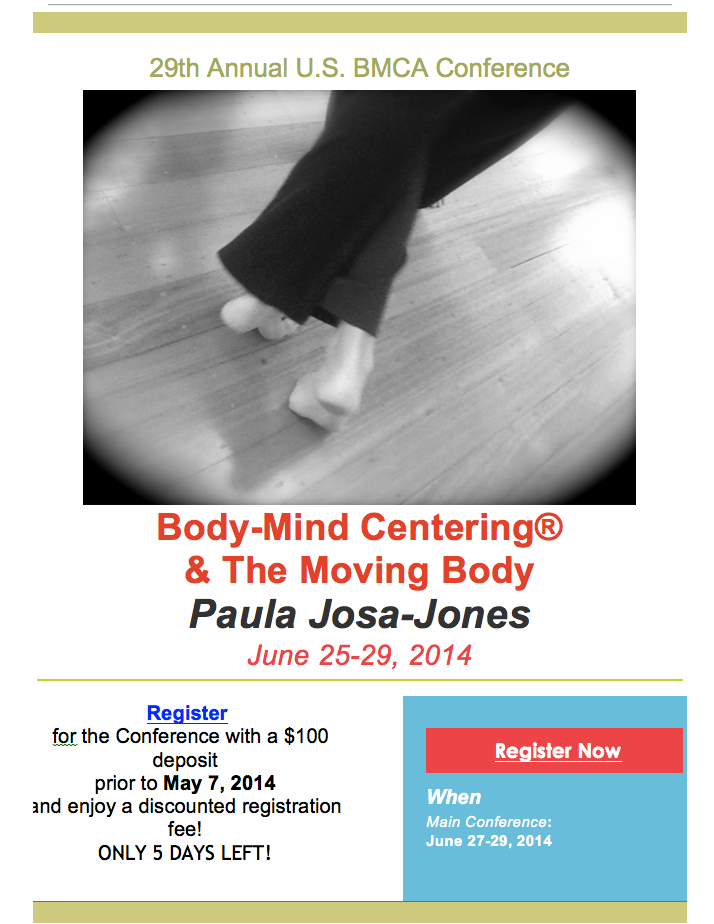
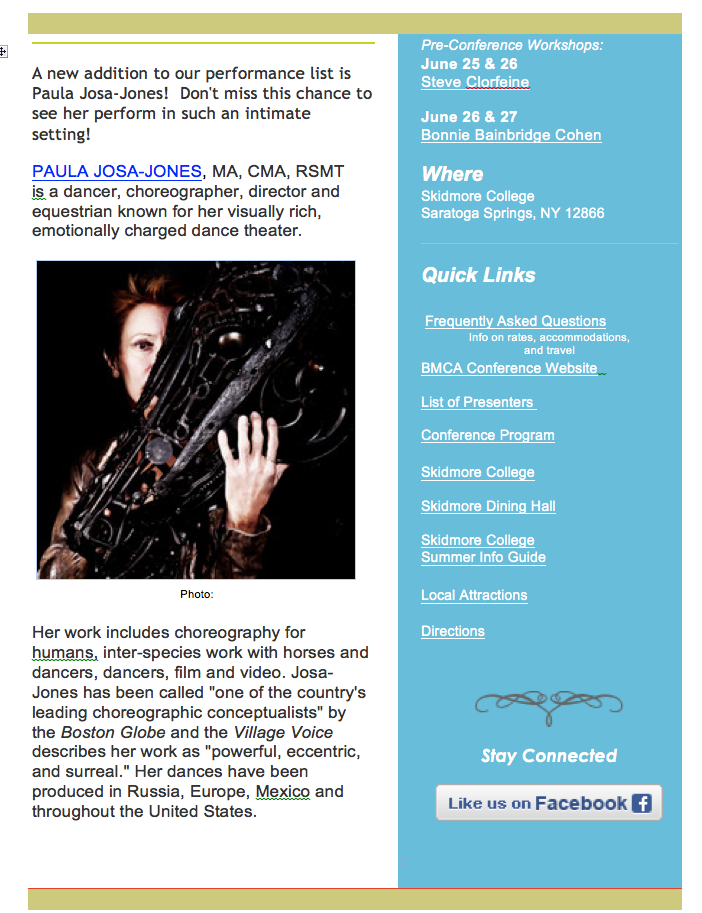
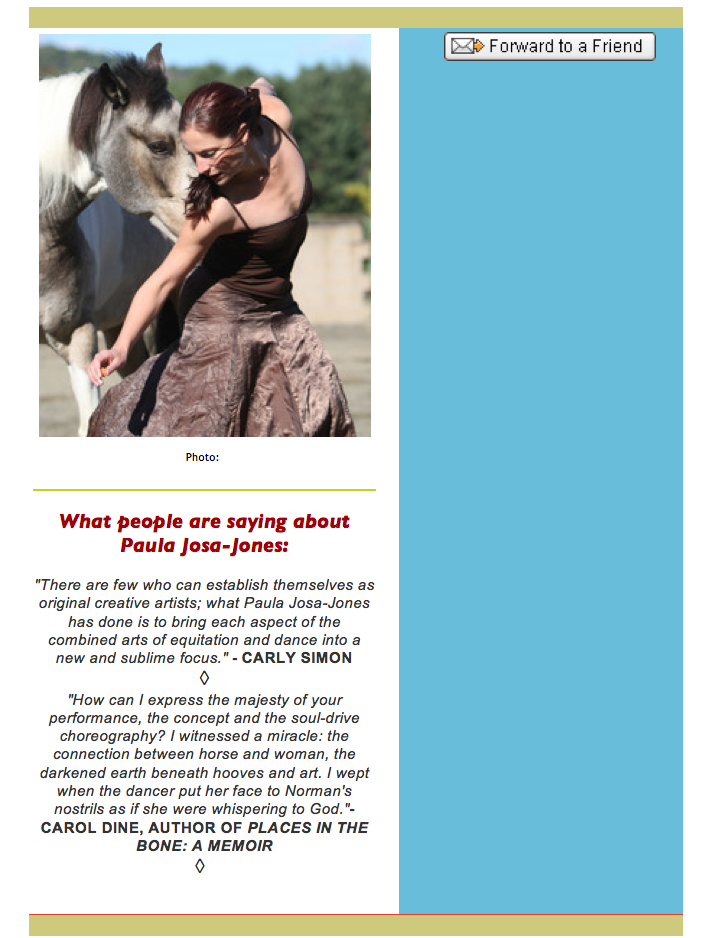
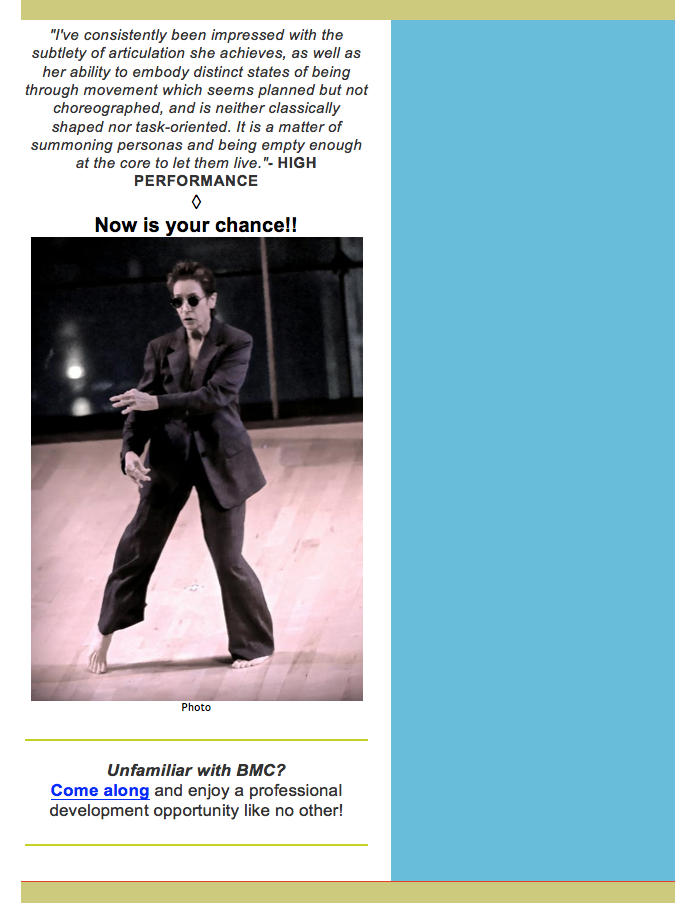 Questions or Registration: Contact Toni Smith: tsmith818@nycap.rr.com
Questions or Registration: Contact Toni Smith: tsmith818@nycap.rr.com
or Ellen Ferris: admin@bmcassociation.org
SUBSCRIBE HERE to receive the Free Daily Post.
Comment on Google+
plasticity, movement & body maps
I have been reading a lot of neuroscience lately, as part of my ongoing research into the body, pain, trauma and recovery. In the process, I have come across an excellent blog, Better Movement. I am interested in the ways that the body maps its history, how our brains are changed by perception, experience and habitual thought, and how by changing our habits of mind and body, the brain and the body can change, transform and expand.
Check out these three excellent posts from Better Movement:
SUBSCRIBE HERE to receive the Free Daily Post.
Comment on Google+
autism and being the witness
I am on Martha’s Vineyard this week, working with Jacob, my autistic godson. Jacob is in an interesting phase — less interaction, more nestling into himself, knocking on the walls with hands and feet. Communication? Yes and maybe. Curled in a fetal position, but his feet are active – rocking, kicking, rubbing. His hands knock the walls, occasionally his head, but soft, like sounding. He rarely looks out, but when he does he gazes our of the right corner of his right eye, then nestles back again behind his upthrown arm, re-entering the relative dark. He does not want to be touched by human hands during this time. However, yesterday I had a long interaction with the soles of his feet with silk scarves, the soft felted wool tail of a mermaid, the scruffier wool on another cushion. Sometime stroking, sometimes pressing and rocking. Dropping pillows softly on him, burying him, letting him rest, resting myself. Very slowly dragging a fluffy blanket away and then replacing it. Listening, observing for cues, while staying in my own body, feeling my own movement, breath, and continually expanding my vision – orienting to all of the space in the room, not narrowing in on only Jacob.
It is a time of more being, less doing, holding the space and remembering to anchor myself in a witness consciousness. What I am “doing” is continually releasing any assumptions, interpretations, naming or judging what Jacob is doing. This is also the practitioner’s dilemna. We can often feel that we should be doing something, understanding something, offering help, creating change. With Jacob, and I suspect many other autistic children, that is holding the wrong end of the stick. In these days with Jacob, when I don’t know what to “do,” I close my eyes – join him in the quiet and the dark – and attune to his breathing, listen to and perhaps reflect his sounds, and let go of all urgency, agenda or story. Let go of helping, knowing, doing.
In the improvisational practice of Authentic Movement, the witness “learns to cultivate their capacity to attend to the inner experience, as they are stirred by what they see and feel. Through this engagement, they are affirming the immanent happening in the body. Adler speaks of herself in the witness role “my intention is to practice towards an emptying of myself, which paradoxically means entering the fullness of myself, my feelings, thoughts, sensations “. Witnessing is like meditation in that it aims for an accepting awareness. But the crucial difference is that the inner witness develops in conscious commitment to another. And the commitment is reciprocal. Adler insists we need each other “in order to stumble towards embodied wholeness….:Our compassion completely depends upon our experience of each other, our relationship to the whole.
In our culture so much looking is mere scanning – seeking the highlights. Our eyes may be become weary from too much looking, too much stimulus,. We forget how to soften and relax the eyes, to receive images and let them touch us. ‘Witnessing’ deriving from the old English word ‘wit’, encompasses the sense of knowing and affirming, as well as humour, seeing unexpected connections. Bearing witness has a vital function going beyond simple acknowledgement. It gives meaning to experience. The witness in authentic movement receives the mover.” http://www.thinkbody.co.uk/papers/embodying.htm
With Jacob, I know that if I have in any way left my own body, dimmed awareness of sensation, breath or movement, I am no longer authentically “with” him. I am a watcher, a caretaker, but I am not a witness and I am not fully present. Joining means many things to many people in the autism community. Sometimes it means action, activity. My experience is to begin from your own body, in quiet, in stillness, with the inflow and outflow of the breath. Then, from your own body, feel into what is present, where is the opening (it may be very, very small) and start there. When you feel yourself narrowing or contracting (thoughts, feelings, body) take time to be still, to breathe, to let your eyes go where they want to go in the space. Begin again.


